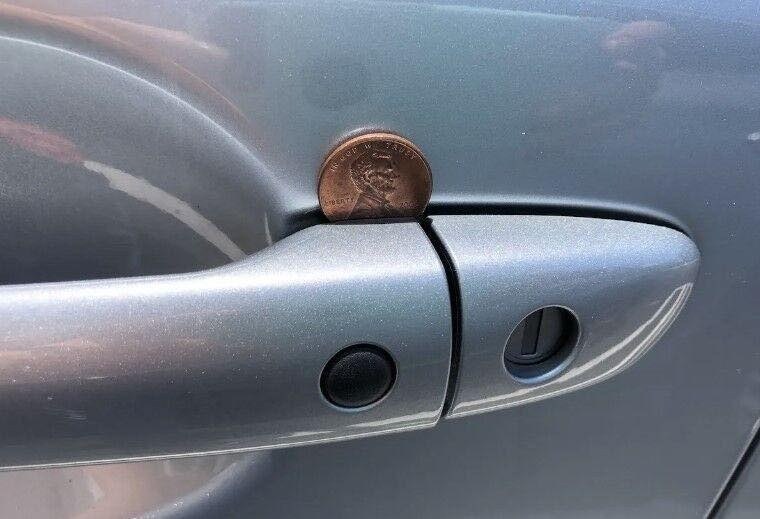What Real Mechanics Are Saying
Arnold Chevrolet Buick, another trusted name in automotive repair and sales in New York, echoed this sentiment. Their mechanics confirmed that modern vehicle security systems are too advanced to be tricked by such primitive tactics.
A spokesperson noted, “We’ve never seen a case where something like a penny lodged in the door handle affected the locking mechanism. It’s not something that would compromise a vehicle’s security.”
In fact, most cars today don’t rely on the physical door handle to engage or disengage the locks. Locking is handled via radio signals from the key fob, or in push-button systems, by proximity sensors. Wedge a penny in there if you want—it’s not going to change a thing, except maybe leave a scratch on your paint.
Why This Urban Legend Keeps Coming Back
So, if this theory doesn’t hold up mechanically, why does it continue to resurface?
Part of the reason lies in our natural instincts to protect ourselves and our property. In a world filled with legitimate concerns about car theft, anything that sounds remotely plausible can trigger alarm bells. Combine that fear with a viral photo and a few dramatic captions, and suddenly it’s being shared thousands of times—regardless of the evidence.
There’s also the allure of sharing safety “hacks” and warnings online. People want to help others avoid danger. In this case, though, spreading the myth may be doing more harm than good by distracting from real car theft tactics.
Real Car Theft Methods You Should Know About
While a penny in the door handle may be harmless, actual car theft methods are far more sophisticated—and more concerning. Here are a few real tactics that criminals are using today:
1. Relay Attacks (Keyless Entry Theft)
Thieves use wireless signal amplifiers to capture the signal from your key fob—even if it’s inside your home—and relay it to your car. This tricks your vehicle into thinking the key is nearby and allows the doors to unlock.
Prevention Tip: Store your key fob in a signal-blocking pouch or metal container at night to disrupt relay signals.
2. CAN Injection Attacks
Some criminals are using advanced tools to tap into a car’s Controller Area Network (CAN) system, often through the headlights or exposed ports. Once inside, they can override the vehicle’s locking system and start the engine.
Prevention Tip: Use a steering wheel lock or physical security device to add an extra layer of deterrence.
3. Break-Ins via Window Smash
Sometimes, it’s not high-tech. A simple smash-and-grab is still among the most common ways thieves access cars—especially when valuables are left in plain sight.
Prevention Tip: Never leave phones, laptops, wallets, or bags in view. Always lock your doors, even when parked at home.
How to Respond If You Find Something Odd on Your Car
While finding a penny—or any other object—in your car’s door handle likely means nothing, it’s not wrong to be cautious.
If something feels off, here’s what you can do:
Inspect your car carefully, especially if you notice tampering, scratches, or unfamiliar items near entry points.
Check your locks manually and with your key fob to ensure they’re functioning correctly.
Document anything suspicious with photos, in case you need to report it later.
Report to authorities if you believe your vehicle has been tampered with or targeted.
But unless there are additional signs of criminal behavior—such as broken windows or forced entry—a penny in the door handle is probably just a misplaced coin or a prank.
